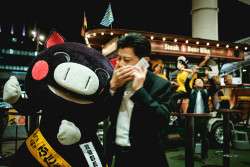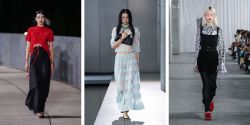
Originally published on metropolis.co.jp on January 2012

The celebrated guitarist for X Japan and Luna Sea, just back from enthralling thousands in Bangkok, is running an hour late. It’s with expectations of a star-size ego that I enter a meeting room at his agency to see Sugizo already at a table.
All sunglasses and leather—he certainly looks the rock god. But it’s with soft-spoken humility that Sugizo tells me about the X Japan concert in Thailand’s rain-soaked capital.
“The Thai fans waited a long time, so we were determined not to let the flood stop our show,” he begins. “It was the first time for me to go to Thailand, and after the cancelation of X Japan’s Beijing concert it would have been really disappointing.” Giants of the visual kei movement, X Japan and Luna Sea are at a level where their concerts become political footballs. Sugizo first experienced a Chinese cancelation when Luna Sea’s Beijing and Shanghai concerts were called off last year.
“It was at the time of the Senkaku problem,” Sugizo says about the ship collision incident near the disputed islands. “We wanted to go and our Chinese fans wanted us to come, but there was strong anti-Japanese sentiment. This year I was glad when I got the chance to go again with X Japan, but the Beijing show was canceled—this time there seemed to be some problem with the promoter.”
When not performing with X or Luna Sea, Sugizo has a lively solo career. It’s hard to fathom exactly how X Japan or Luna Sea might upset Chinese authorities, but Sugizo takes the politics of his solo music pretty seriously. The second song on his new album Flower of Life is titled “Enola Gay” after the plane that dropped the bomb on Hiroshima.
“The message is that an A-bomb must never be dropped again,” he explains. “My American drummer’s birthday is on August 6 when the bomb was detonated, while my singer is Russian and I’m Japanese. The song reflects the fact that three people from former enemy states with nuclear pasts can be friends. It begins with a sense of terror but gives way to hope for a nuclear-free world.”
Since Fukushima, Sugizo—who has volunteered extensively in Tohoku—is of the opinion that Japanese society needs to be rethought from the ground up. Another song, “Prana,” for example, represents his hopes for clean energy. But he has mixed feelings about the intersection of politics and music.
“I’ve changed,” he says. “For me now, I don’t voice overt political views. It’s something that comes out in my music indirectly. I respect people like Bob Dylan and John Lennon, but I can’t follow them. I can’t simply sing, ‘No war.’ Too much ideology changes the music—that’s something I want to avoid.”
People who know Sugizo from Luna Sea and X Japan might be surprised to learn that his solo work is drenched in electronica. Flower of Life and its companion remix album Tree of Life are informed more than anything by psychedelic trance, and the guitarist performs regularly with psy-trance legends Juno Reactor.
“I’ve been into electronic music for a very long time, and the guitar came after,” explains the son of classical musicians, whose first instrument was the violin. “I found success with Luna Sea, but electronic music is actually closer to my roots as a musician.
“Luna Sea and X Japan are what you might call ‘rock entertainment,’” he expands when asked about his differing approaches. “We need bands like these to reach a wide audience. My solo work is more cult—it’s the difference between art and entertainment. For musicians it’s natural to do both and I don’t like to divide them into separate spheres. It’s journalists and fans who create borders.”
Replacing the deceased Hide as full-time guitarist in X Japan was a big decision. How did Sugizo commit to filling the role of the very guitarist who had discovered Luna Sea, and whose 1998 death, likely by suicide, had elevated him to mythic status?
“First they asked me to support them on tour,” Sugizo recalls. “Of course I said OK. X Japan are old friends and I was close to Hide-san. But it was difficult to imagine being a full member. I thought it over for about a year: What would Luna Sea think? And could I handle three careers? In the end I was swept along with the tide.”
Twenty-three years since Sugizo (Yune Sugihara) helped to define the second wave of the visual kei movement with Luna Sea, where does the now-worldwide scene stand?
“It’s difficult to say, because visual kei is not really a musical genre,” he muses. It’s a culture or style. There are many different sounds: rock, metal, pop, comedy…”
“It’s great that Japanese forms of culture like visual kei and anime have been acknowledged internationally, but at the same time I think this movement will soon end.”
Sugizo says the next scene will not be so closely identified with Japan. “It will be something that is just simply good, not visual kei per se. People who just attach themselves to visual kei will fade quickly, whereas those who create excellent work will be remembered.
“Visual kei has been a bridge to connect Japanese culture to the world,” Sugizo concludes. “But from here on it will be less about presentation than the music itself. Japanese music will continue to be heard worldwide, but the term ‘visual kei’ will fade. We’re now at a crossroads. Our next step is to create truly excellent works.”
Sugizo performs with Juno Reactor on Jan 20 at Ageha (listing).
He also appears in the play 7 Doors at The Globe Tokyo, Mar 16-Apr 1 (listing).
Flower of Life and Tree of Life are out on Avex Trax.







